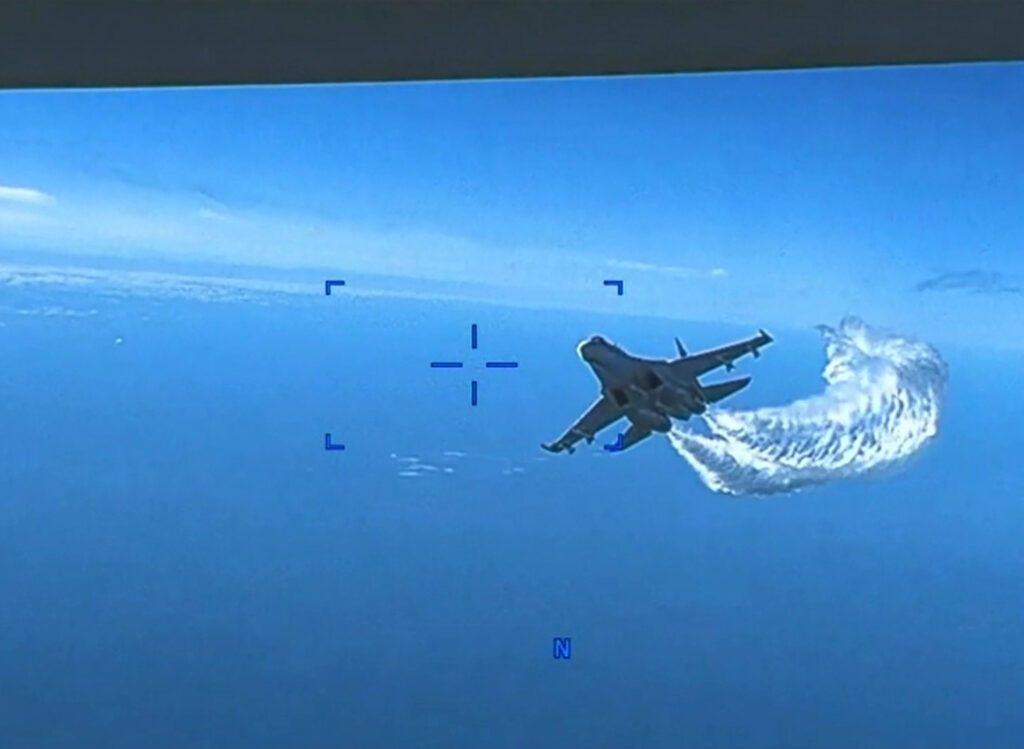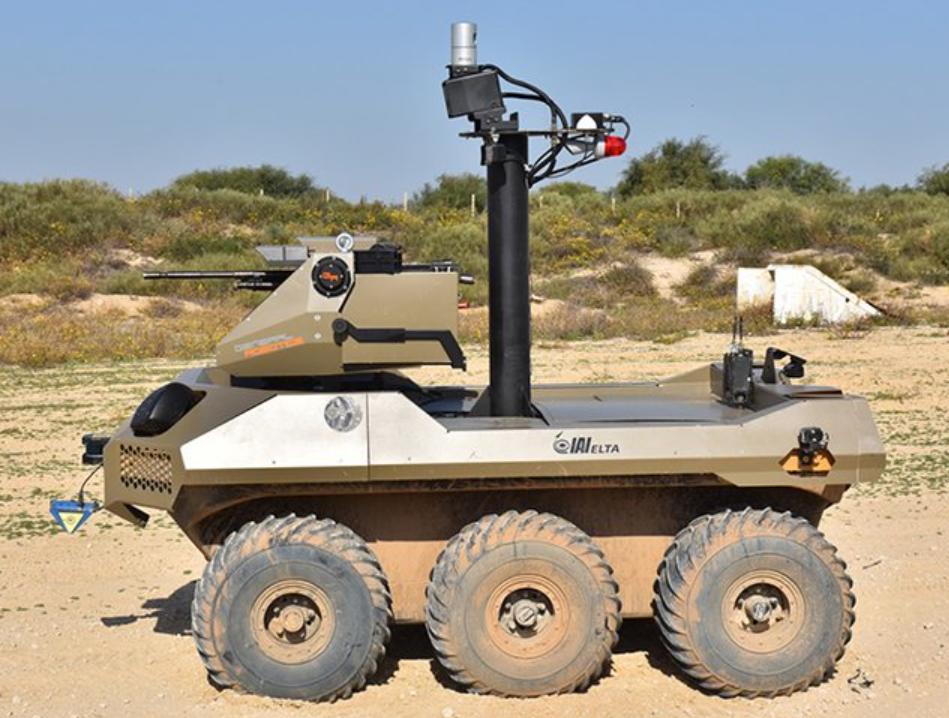As conflicts rage throughout Ukraine and the Center East, the trendy battlefield has change into a testing floor for AI-powered warfare.
From autonomous drones to predictive focusing on algorithms, AI methods are reshaping the character of armed battle.
The US, Ukraine, Russia, China, Israel, and others are locked in an AI arms race, every vying for expertise supremacy in an more and more risky geopolitical panorama.
As these new weapons and techniques emerge, so do their penalties.
We now face vital questions on warfare’s future, human management, and the ethics of outsourcing life-and-death selections to machines.
AI might need already triggered army escalation
Again in 2017, Undertaking Maven represented the Pentagon’s main effort to combine AI into army operations. It goals to allow real-time identification and monitoring of targets from drone footage with out human intervention.
Whereas Undertaking Maven is commonly mentioned when it comes to analyzing drone digital camera footage, its capabilities doubtless prolong a lot additional.
In keeping with the non-profit watchdog Tech Inquiry’s analysis, the AI system additionally processes information from satellites, radar, social media, and even captured enemy property. This broad vary of inputs is named “all-source intelligence.”
In March 2023, a army incident occurred when a US MQ-9 Reaper drone collided with a Russian fighter jet over the Black Sea, inflicting the drone to crash.
Shortly earlier than that incident, the Nationwide Geospatial-Intelligence Company (NGA) confirmed utilizing Undertaking Maven’s expertise in Ukraine.
Lieutenant Basic Christopher T. Donahue, commander of the XVIII Airborne Corps, later said fairly plainly of the Ukraine-Russia battle, “On the finish of the day, this turned our laboratory.”
Undertaking Maven in Ukraine concerned superior AI methods built-in into the Lynx Artificial Aperture Radar (SAR) of MQ-9 Reapers. As such, AI might need been instrumental within the drone collision.

Within the aftermath, the US summoned the Russian ambassador to Washington to specific its objections, whereas the US European Command referred to as the incident “unsafe and unprofessional.”
Russia denied any collision occurred. In response, the US repositioned some unmanned plane to watch the area, which Russia protested.
This example offered the menacing chance of AI methods influencing army selections, even contributing to unexpected escalations in army conflicts.
As TechInquiry asks, “It’s price figuring out whether or not Undertaking Maven inadvertently contributed to one of the important army escalations of our time.”
Moral minefields
Undertaking Maven’s efficiency has been largely inconsistent to this point.
In keeping with Bloomberg information cited by the Kyiv Impartial, “When utilizing varied varieties of imaging information, troopers can accurately determine a tank 84% of the time, whereas Undertaking Maven AI is nearer to 60%, with the determine plummeting to 30% in snowy circumstances.”
Whereas the moral implications of utilizing AI to make life-or-death selections in warfare are deeply troubling, the chance of malfunction introduces an much more chilling side to this technological arms race.
It’s not only a query of whether or not we must always use AI to focus on human beings, however whether or not we are able to belief these methods to perform as meant within the fog of battle.
What occurs when civilians close by are labeled as targets and destroyed autonomously? And what if the drone itself goes haywire and malfunctions, touring into environments it’s not skilled to function in?
AI malfunction on this context isn’t merely a technical glitch – it’s a possible catalyst for tragedy on an unimaginable scale. In contrast to human errors, which is likely to be restricted in scope, an AI system’s mistake might result in widespread, indiscriminate carnage in a matter of seconds.
Commitments to gradual these developments and maintain weapons below lock and key have already been made, as proven when 30 nations joined US guardrails on AI army tech.
The US Division of Protection (DoD) additionally launched 5 “moral ideas for synthetic intelligence” for army use, together with that “DoD personnel will train applicable ranges of judgment and care, whereas remaining answerable for the event, deployment, and use of AI capabilities.”
Nevertheless, latest developments point out a disconnect between these ideas and apply.
For one, AI-infused expertise is probably going already answerable for severe incidents outdoors its meant remit. Secondly, the DoD’s generative AI activity pressure entails outsourcing to non-public firms like Palantir, Microsoft, and OpenAI.
Collaboration with industrial entities not topic to the identical oversight as authorities businesses forged doubt on the DoD’s capacity to regulate AI growth.
In the meantime, the Worldwide Committee of the Pink Cross (ICRC) has initiated discussions on the legality of those methods, notably in regards to the Geneva Conference’s “distinction” precept, which mandates distinguishing between combatants and civilians.
AI algorithms are solely nearly as good as their coaching information and programmed guidelines, so they might battle with this differentiation, particularly in dynamic and unpredictable battlefield circumstances.
As indicated by the Black Sea drone incident, these fears are actual. But army leaders worldwide stay bullish about AI-infused battle machines.
Not way back, an AI-powered F-16 fighter jet out-maneuvered human pilots in a check demo.
US Secretary of the Air Drive Frank Kendall, who skilled it firsthand, summed up the inertia surrounding AI army tech: “It’s a safety danger to not have it. At this level, we’ve to have it.”
On the face of it, that’s a grim admission.
Regardless of millennia of warfare and its devastating penalties, the mere considered being one step behind ‘the enemy’ – this primal nervousness, maybe deeply rooted in our psyche – continues to override purpose.
Homegrown AI weaponry
In Ukraine, younger firms like Vyriy, Saker, and Roboneers are actively creating applied sciences that blur the tenuous line between human and machine decision-making on the battlefield.
Saker developed an autonomous focusing on system to determine and assault targets as much as 25 miles away, whereas Roboneers created a remote-controlled machine gun turret that may be operated utilizing a sport controller and a pill.
Reporting on this new state of AI-powered fashionable warfare, the New York Occasions lately adopted Oleksii Babenko, a 25-year-old CEO of drone maker Vyriy, who showcased his firm’s newest creation.
In a real-life demo, Babenko rode a bike full-pelt because the drone tracked him, free from human management. The reporters watched the scene unfold on a laptop computer display.
The superior quadrocopter finally caught him, and within the reporters’ phrases, “If the drone had been armed with explosives, and if his colleagues hadn’t disengaged the autonomous monitoring, Mr. Babenko would have been a goner.”
Equally to Ukraine, the Israel-Palestine battle is proving a hotbed for army AI analysis.
Experimental AI-embedded or semi-autonomous weapons embrace remote-controlled quadcopters armed with machine weapons and missiles and the “Jaguar,” a semi-autonomous robotic used for border patrol.
The Israeli army has additionally created AI-powered turrets that set up what they time period “automated kill-zones” alongside the Gaza border.

Maybe most regarding to human rights observers are Israel’s automated goal era methods. “The Gospel” is designed to determine infrastructure targets, whereas “Lavender” focuses on producing lists of particular person human targets.
One other system, ominously named “The place’s Daddy?“, is reportedly used to trace suspected militants when they’re with their households.
The left-wing Israeli information outlet +972, reporting from Tel Aviv, admitted that these methods nearly actually led to excessive civilian casualties.
The trail ahead
As army AI expertise advances, assigning accountability for errors and failures turns into an intractable activity – a spiraling ethical and moral void we’ve already entered.
How can we stop a future the place killing is extra automated than human, and accountability is misplaced in an algorithmic fog?
Present occasions and rhetoric fail to encourage warning.

